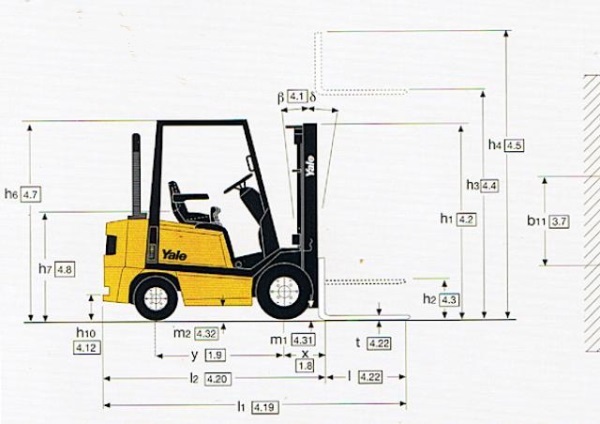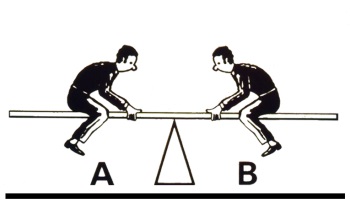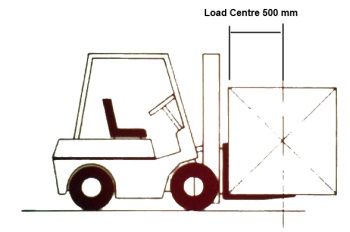Forklift Technical Information
The largest forklift operator training website in the world
![]()
![]()
Forklift Longitudinal stability
Fork lift trucks are designed to be safe when properly used. The manufacturers all test their machines to the standards laid down by one of three organisations and these standards are the same in each case.
 To make a truck safe so that it doesn't overturn in a forwards direction the manufacturers use a principle very similar to that used in a child's see saw as anyone who has been on an approved training course will tell you.
To make a truck safe so that it doesn't overturn in a forwards direction the manufacturers use a principle very similar to that used in a child's see saw as anyone who has been on an approved training course will tell you.
Using the see saw analogy we can see that in the first picture above, the see saw is in balance. It will only be in balance if the people on it are the same weight as each other and also sit the same distance from the tipping point which is known as the fulcrum. If, (say), the person on the right is heavier than the person on the left then obviously the see saw will tip over. This could be corrected if the person on the left moved further away from the centre or fulcrum. It is exactly this principle that is used in the design of a fork lift.
 As can be seen from this picture the load is carried very close to the front drive axle whilst the distance to the rear counterweight of the truck is longer. This allows the counterweight at the rear to counterbalance the load at the front with just a little bit "left over" as a safety factor. It should be noted that the safety factor is very small and you are advised to read the section on stability testing to get a clearer picture. If you are a truck operator don't be fooled into thinking that you have a lot of safety factor - you don't!
As can be seen from this picture the load is carried very close to the front drive axle whilst the distance to the rear counterweight of the truck is longer. This allows the counterweight at the rear to counterbalance the load at the front with just a little bit "left over" as a safety factor. It should be noted that the safety factor is very small and you are advised to read the section on stability testing to get a clearer picture. If you are a truck operator don't be fooled into thinking that you have a lot of safety factor - you don't!
Take another look at the picture above where it says "Load Centre". This is arguably one of the most important factors that an operator should be familiar with before he/she attempts to pick up a heavy load. The standard load centre nowadays is 500 mm (20 ins) as it is assumed that a standard load will be 1000 mm. It was not always like this and the original load centre in the UK was 24 inches (600 mm) assuming a 48 inch long load. I mention it because there are still a great many trucks around with the 'old' load centre. Some trucks even quote both load centres in an attempt to assist the operator.
It follows from the above that every load should be hard up against the front face of the forks, (often erroneously called the heel of the forks), because any gap here will increase the dimension on one side of our truck see saw and it can tip over!
Trucks are also tested for there tendancy to tip over sideways and this is know as lateral stability